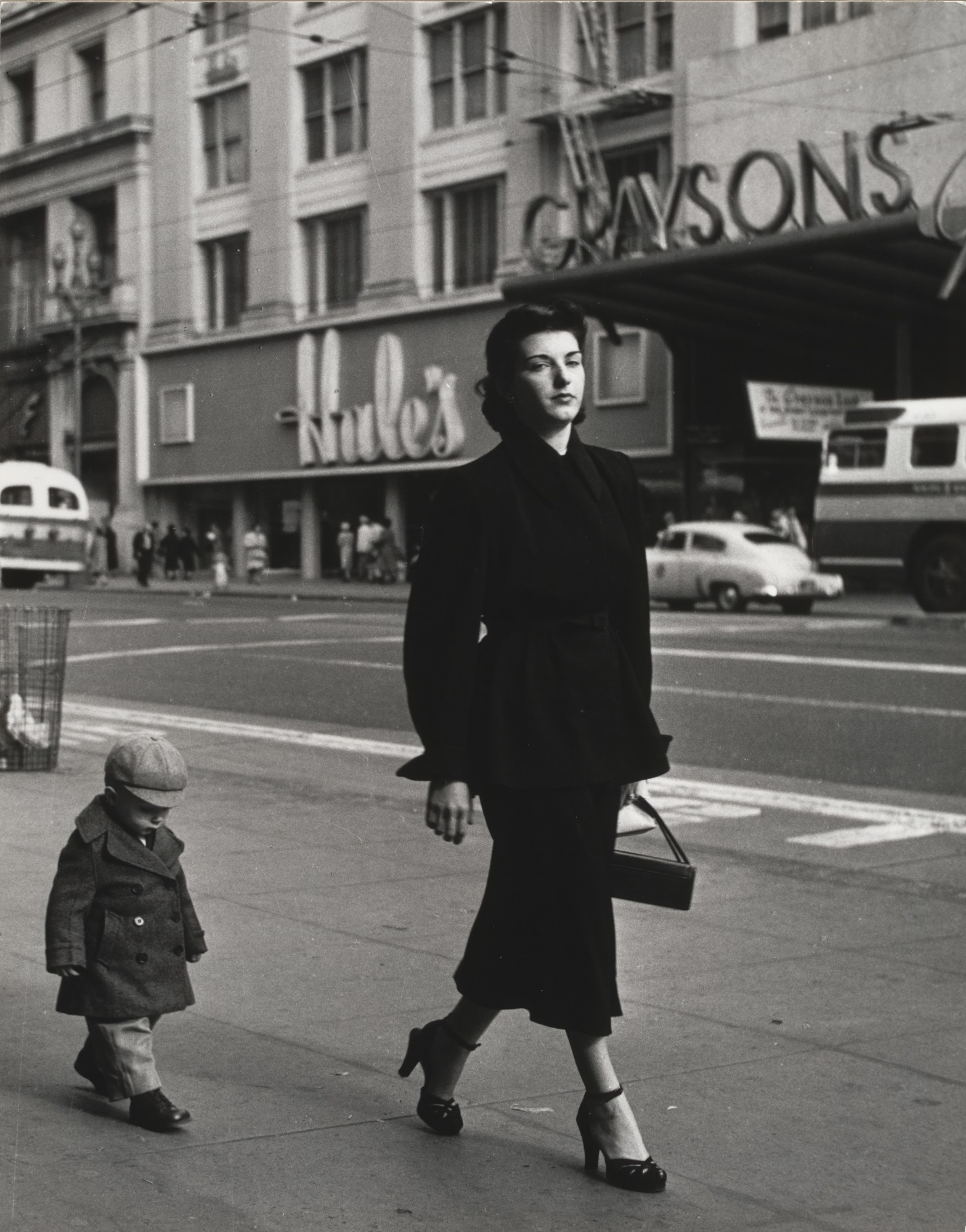“Washington, Yakima Valley, near Wapato”, Dorothea Lange, 1939
Dorothea Lange (1895-1965) is an American photographer. She is famous for her documentary photography in the Great Depression-era in America in the 1930s. Lange took photographs of unemployed people and difficult circumstances during that era. She began her photography career by working in an NYC photo studio and turned her concern to documentary photography since the 1920s when she photographed Native Americans. Her most well-known photograph is ”Migrant Mother” that depicts a migrant mother with her children in Nipomo, California during a hard time of the Great Depression.
In 1939, Dorothea Lange took a portrait of a young girl holding barbed wire while her mother stands behind her. The mother seems like she is looking for her daughter, while the daughter still wants to play. This photo was taken when Lois’s (the young girl) family lived in Yakima Valley, Washington. Lange took this photo as documentation of Farm Security Administration, which provides help for farmers during the Great Depression era.

Lange also took photographs of her neighborhood in San Fransisco. Lange photographed a mother with her son walking along a road in the downtown. The mother is walking upright, while the son is looking at the ground.
Lange says in an interview, the task of the photographer is to tell others about something that worthy to tell. “what is really there?” and “What actually is the human condition?”. Lange is interested in portrait photography. For Lange, that human face is the universal language. People from over the world can feel and understand the same facial expression.
Lange’s photographs is really an artwork. It is not because of the using of the camera to create a copy of reality, but it comes from the double poetics that is produced by the photographs. As Jacques Rancière says, in The Future of The Image, the double poetics of the image are “the legible testimony of a history written on faces or objects and pure blocs of visibility, impervious to any narrativization, any intersection of meaning”. The poetics of the image is created from the relation of visible and the sayable. Lange’s portrait photographs contain the poetics of images. From the facial expression of the subject, we know the hard feeling and pain of a mother and a child during the Great Depression era in America. The feeling in that tough time was also manifested in how the mother and the child relate to each other.
Photography is not the first art that employs these double poetics. Before it, literature uses the relation of the visible and sayable to deliver a feeling or message. There are pictorial elements in the literature. Text is the visible language because it makes language can be seen in words, and also the narration of words can make something visible.
Lange also often puts some texts on her photographs, either her brief explanation about the picture or utterance from the subject. For her, “all photographs… can be fortified by words”. The text attached to the photographs can be used to amplifying its meaning and its poems that inherently has contained in those photographs.


